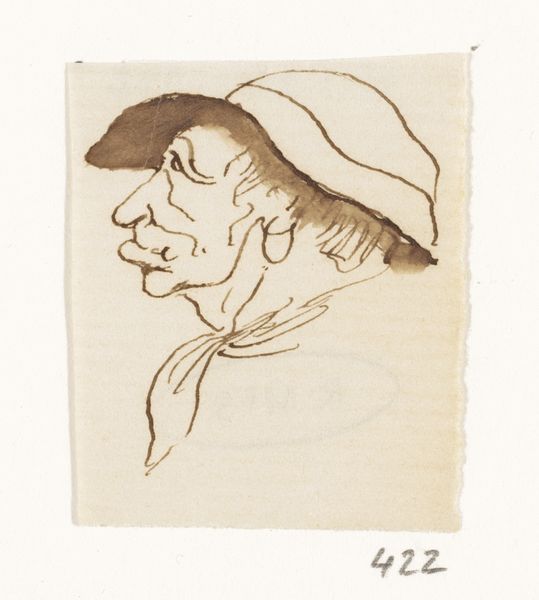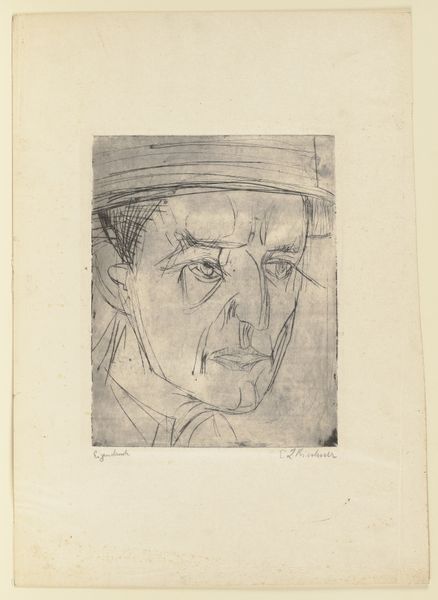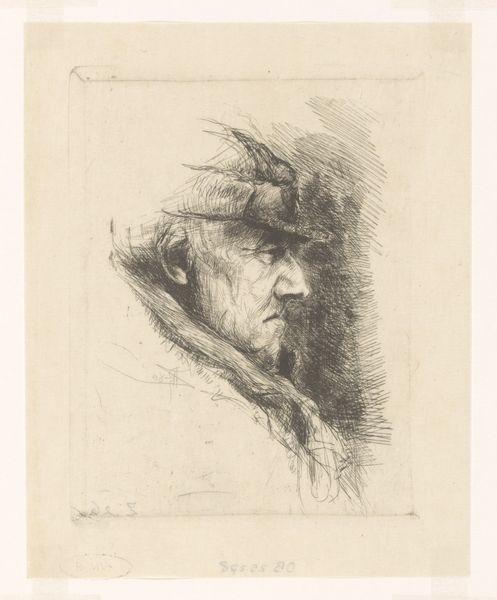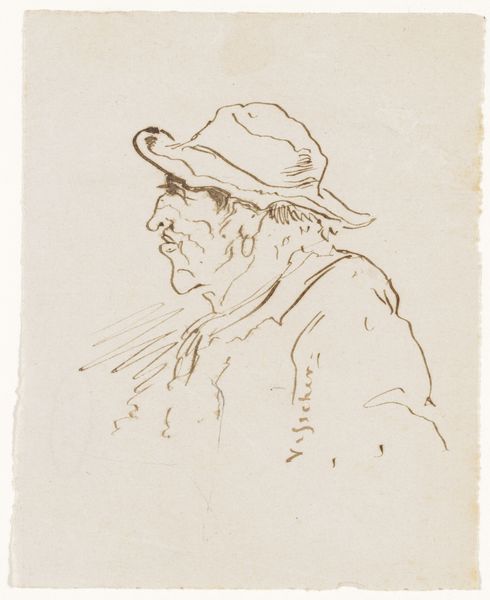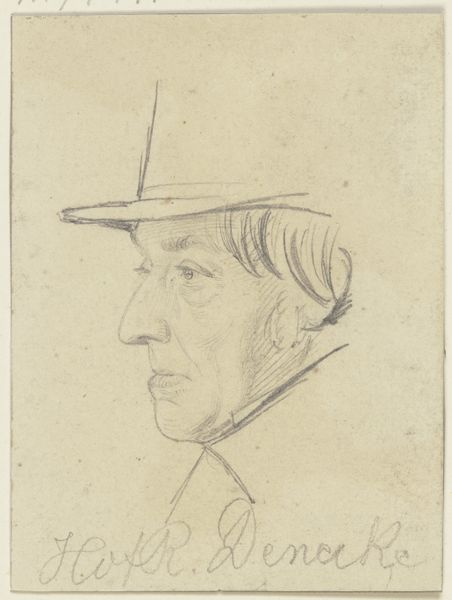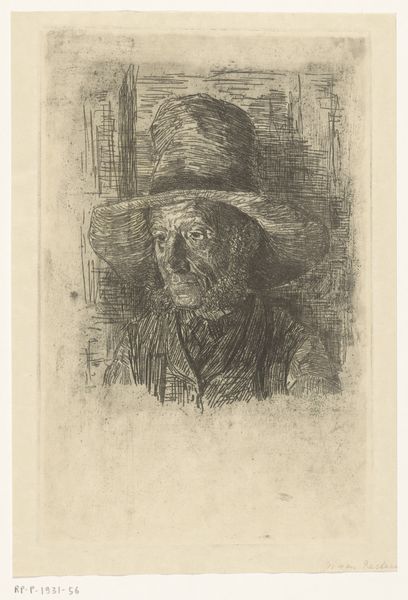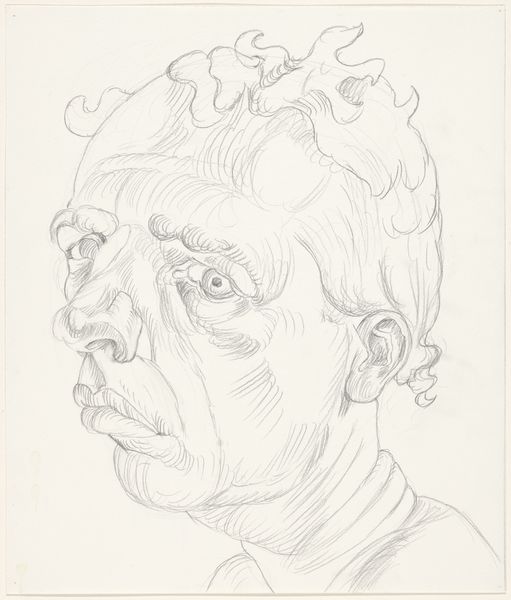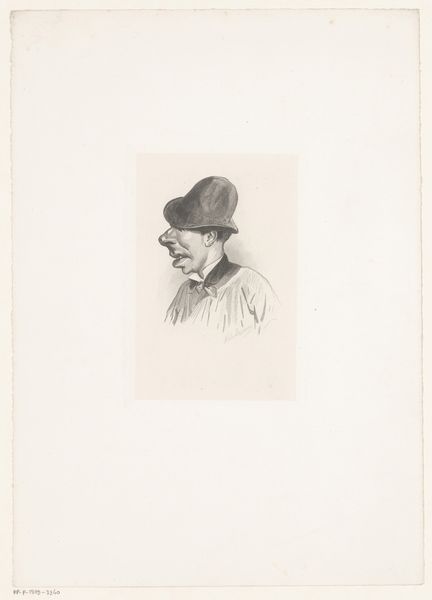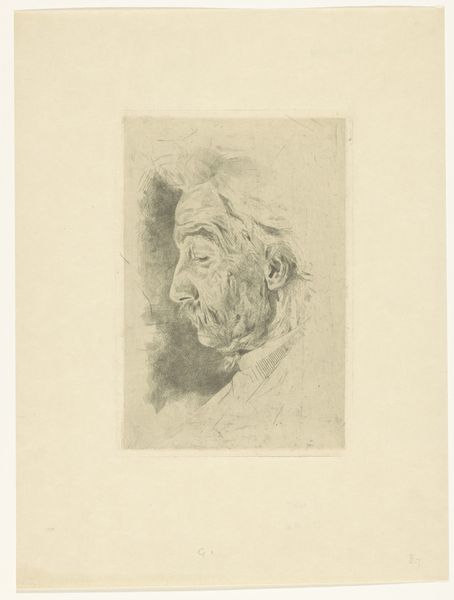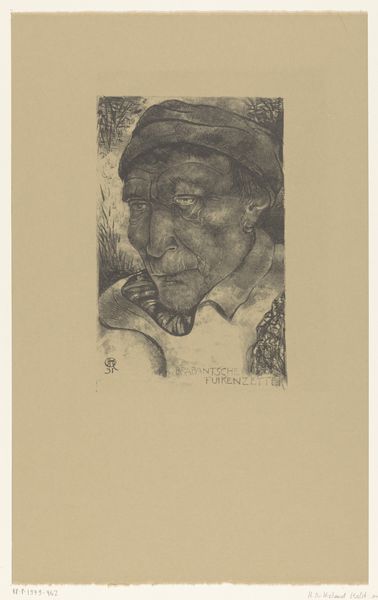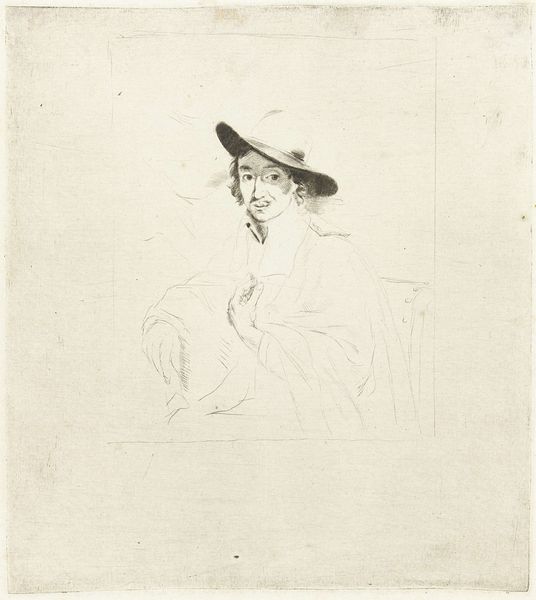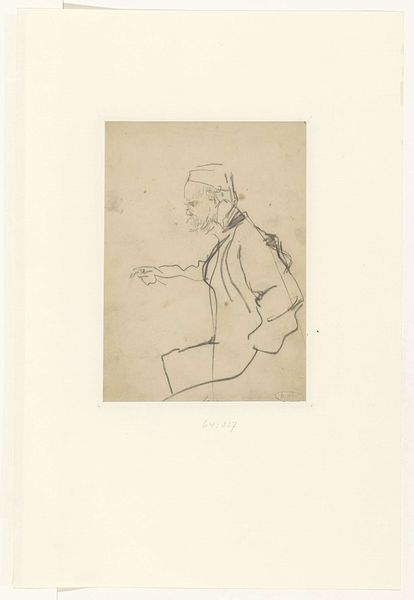
drawing, lithograph, print, paper, pencil
#
drawing
#
self-portrait
#
lithograph
# print
#
paper
#
pencil drawing
#
pencil
#
expressionism
Dimensions: 202 × 185 mm (image); 385 × 340 mm (plate); 634 × 455 mm (sheet)
Copyright: Public Domain
Editor: We’re looking at Edvard Munch’s "Self-Portrait with Hat I" from 1927. It's a lithograph, primarily rendered in red pencil on paper. It feels so stark and raw. What do you see in this piece beyond just a portrait? Curator: Beyond the immediate image, I see Munch grappling with aging and mortality, themes central to his late work. How does a prominent expressionist, known for visualizing internal turmoil, confront the gaze in self-representation? He is not simply showing himself but negotiating his identity against societal expectations of masculinity and artistic genius. Consider also, what does it mean for a privileged white male to 'express' his inner self at the time? Editor: That's a great point. The expression seems almost… weary, as though he is confronting his own legacy. Is the hat just a detail, or is there something more to it? Curator: I’m glad you noticed the hat! It serves not just as a personal identifier, but potentially a symbol of the male artist’s position in society, or perhaps a protective shield against external critique. What assumptions do we make about a man of his time based on this self-representation? This invites discussion on the performativity of identity and how Munch engages – or perhaps fails to engage – with disrupting conventional norms. Editor: So, it's not just about "himself", but about how societal forces shaped his self-perception and representation. Thank you! I will remember this new view of his portrait. Curator: Precisely. Art, especially self-portraits, serves as a powerful arena for dialogue about selfhood within larger social, political and art-historical narratives. Always question the context in which the work was made and how it resonates with contemporary perspectives.
Comments
No comments
Be the first to comment and join the conversation on the ultimate creative platform.
